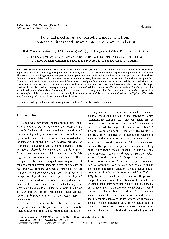摘要
Through integrating the state of the art scientific knowledge in different research fields, some potential mechanisms of large-scale movements of underground pore-fluids such as H(2)O and CO(2) in the continental lithosphere were presented and discussed. The results show that the generation and propagation of porosity waves are important mechanisms to transport mass and heat fluxes from the continental lithospheric mantle into the lower continental crust; the generation and propagation of porosity waves, pore-fluid flow focusing through lower and middle crustal faults, advection of pore-fluids through the lower and middle crust, and whole-crust convection in some particular cases are important mechanisms to transport mass and heat fluxes from the lower into the upper continental crust; heat and mass transport through convective pore-fluid flow is the most effective mechanism of ore body formation and mineralization in hydrothermal systems; due to heat and mass exchange at the interface between the earth surface, hydrosphere and atmosphere, it is very important to consider the hydro-geological effect of the deep earth pore-fluids such as H(2)O and CO(2) on the global warming and climate change in future investigations.
- 出版日期2008-2
- 单位中南大学; CSIRO
